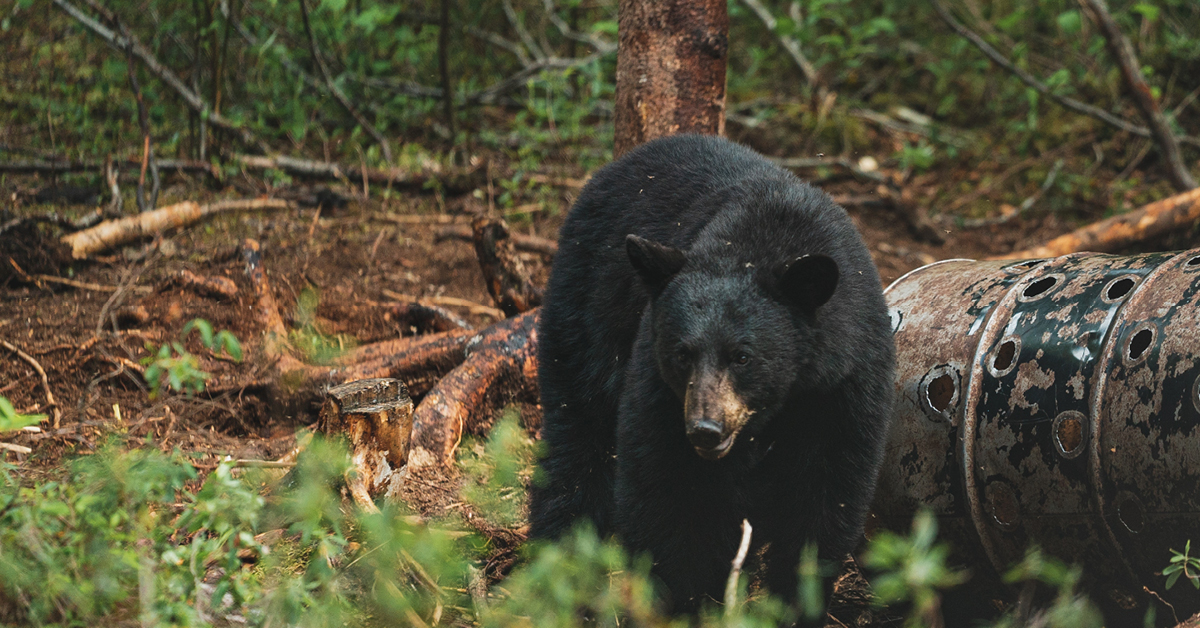Migratory Bird Hunting: Basic Tips for Planning Your Next Hunting Trip
Hunting | March 24, 2024
SAIL
April 23, 2021

Credit: Emile David
Hunting black bears is an excellent hunting option for those who hate freezing in their blind or stand at the end of autumn. It’s also an opportunity to taste a deliciously exceptional type of meat which, in our opinion, is unrivalled in the burger world. But, before enjoying, you’ve got to get prepared. If you’re new to hunting, no need to worry! Follow our tips, and you’ll have everything you need to embark on this unique adventure.
(Photo Credit: Emile David)
Article written in collaboration with FedeCP.
Black bear hunting season begins on May 15. On the evening of May 14, if you feel the sudden urge to try it out, the best thing to do would be to join a friend who is already going, or to look for a spot with an outfitter. Bears are creatures of habit, so you’ll have to take care to get ready daily long before May 15 if you hope to see one appear near your hunting blind.
The black bear is an omnivore; it eats a little of everything. Small fruits, plants, insects, rodents… the woods are its restaurant, and it knows how to jump on every opportunity to try something different on the menu.
This being said, black bears love sugar. It’s a sort of sneaky trick upon which you can base yourself when it comes time to lure one in. In a barrel, prepare a feast for your future capture with feed, cakes, corn, molasses, sweets, etc. Different products exist on the market to enhance bait: scented lures, attractant jelly, sweet liquids, etc. The important thing is to be diligent and to make sure that your game is lacking nothing. You want to keep its interest.
In addition to attracting the bear, you need to prepare to shoot. Where should you aim to shoot when tracking down this large animal? Though deer and moose have beautiful, well-shaped legs to help you assess vital areas at which to shoot, the black bear can be compared to a blurry black spot with poorly-defined limbs. You have to get to know it well and wait for the opportune moment in order to take a fatal shot. View lots of images and educate yourself on a bear’s vital areas until you learn to see through its coat.
Furthermore, take note of the size of the animal in your field of vision. Sharpen your reflexes to determine the magnitude of the black bear, especially if you’re on the hunt for a trophy. It’s all a matter of proportion: the position of its ears with regard to its head, the length of its paws in relation to its body. The bear will seem to have large ears that are very close together and paws that are quite long compared to the height of its body.
No two hunting sessions are ever exactly the same. An entire season or just a couple of hours on the lookout can both equal a prize. The following year, you may be faced with several days of empty-handed waiting. There’s nothing more uncertain than hunting, especially black bear hunting. However, there are some elements that you can control to help yourself along.
As a nature lover, you’re surely very excited about being out in the woods during the time of its spring rebirth. The smell of the damp earth, the budding trees, the sound of birds…this beautiful spectacle awakens the senses and favours your well-being. However, under your feet another species is also excited about this time of year: stinging insects. Spring means hatching. You can’t avoid it, so you might as well be prepared. The challenge: Fighting off flies, mosquitos, and ticks without the traditional creams or scented sprays. To go unnoticed, you’ll need long camo clothing, nets, and Thermacell diffusers, which ensure effective and more discreet protection. Not only will you avoid bites, but you’ll decrease your movement. If you’re using your arms to swat away insects, it’s highly probable that other animals will avoid your presence as well.
Another important thing to consider: the heat. Hunting in the summer means that every minute counts if you wish to bring back meat and keep it fresh. Although it may seem difficult to carry out for many reasons, the evisceration step is essential; consider going accompanied by someone experienced, especially if you don’t feel you’ll be able to do it alone. Freeze some water containers to have ice on you in order to cool the animal’s carcass.
Last step: find a butcher. Though you’ll have gotten your meat and put it into a cooler, it isn’t necessary to transport it over hundreds of kilometres by car or to keep it in your garage while you call butchers all over the city. Have a well-defined plan for post-shooting. What’s the best option? Plan ahead. You can also leave a couple of pounds of delicious meat at the butcher’s for people in need. The butcher will give the meat to a food bank. You’ll enjoy your bear meat knowing you also did a good deed.
There are only a couple of weeks left before black bear season opens, so let’s get to it!
Hunting Gear